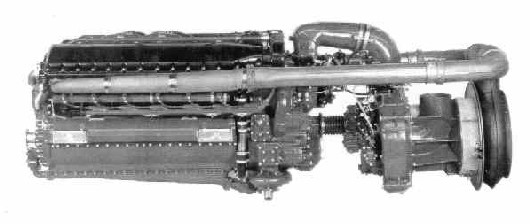Allison V-1710

Posted on 08/23/2009 7:08:39 PM PDT by mamelukesabre
ARLINGTON, Va. —The Truck Writers of North America (TWNA) announced Detroit Diesel Corporation’s DD15 engine turbo compounding as the winner of its Technical Achievement Award for 2008 during TMC’s 2009 Annual Meeting in Orlando, Fla., Feb. 9-12.
(Excerpt) Read more at layover.com ...
Here's an explanation: http://en.wikipedia.org/wiki/Turbo-compound_engine
And the link again: http://www.layover.com/news/article/detroit-diesel-dd15-engine-turbo-compounding-wins--15127.html
Audi used Turbo-diesel technology to win several LeMans races.
Puegot won with turbo-diesel this year.
Nothing new here, except the possible popularity for passenger vehicles in the US big IF the government will allow it.
VW’s Jetta TDI is a 2.0 liter engine, which gives 29 mpg city and 40 mpg highway.
I don’t think you understand. This is not a typical turbo. Read the wikipedia article on “turbo-compounding”.
Does this also help with turbo lag?
That was my instantaneous thought when I saw the thread title.
Increased complexity often equals increased maintenance.
No idea. But in the case of a semi truck, where engines don’t spin up much more than 2000RPMs, I think turbo lag is a moot point. This is more about fuel efficiency than anything else.
The fascinating thing about it is that a compound-turbo engine is the halfway step before going to a turbine engine. The boys at detroit diesel figured out that adding a compound turbo after the regular turbo increases the effectiveness of the new pollution control equipment required by the new stricter pollution regs.
I can’t wait to see what they come up with in the next 20 years.
Computers. they may make the difference between then and now. I guess time will tell.
The boys at detroit diesel figured out that adding a compound turbo after the regular turbo increases the effectiveness of the new pollution control equipment required by the new stricter pollution regs.
**********************************************
You could say that but the way I read it this isn’t your typical compound turbo app where you’ve got turbo’s in “series” with the 2nd getting the last bit of power and engine heat and blowing into the intake ,, in this case the second turbo seems to be connected to a hydraulic pump/motor that drives the tranny output shaft .. the same way a/c compressors are remote mounted and hydraulically driven on many busses and the compressor side of the turbo is not mentioned in the article... it could go to the intake or it could go to waste ... the only thing for sure is that exhaust back pressure is greatly increased as EGR recirc is off the charts.
“Nothing new here, except the possible popularity for passenger vehicles in the US big IF the government will allow it.”
Why should gov’mt have any say whatsoever in this at all?
I have always wondered what happened to turbine auto engines. In the late 50’s Chrysler built 50 Turbine powered cars and put them on the road. Also Truck engines were built, not to mention Granitellie’s Indy cars. No auto since that I know of.
barbra ann
Expensive, poor mileage, poor emissions.
I think you are not understanding what a compound turbo is. A compound turbo doesn’t HAVE a compressor side.
If I'm not mistaken, the rules were re-written to bar turbines from the race.
I agree that the 2nd turbine must be direct connected to the out put shaft as I don’t see how pumping more air into the intake will help any thing, as we don’t use all the output of the first turbo.
barbra ann
Truck diesel engines are already "blowdown" type turbochargers, they don't use superchargers driven by the crankshaft as this wiki article suggests.
Apparently this "compound turbocharged engine" is just a method of using several turbochargers to increase pressures without increasing intake air/fuel flow.
Trucks with a single turbocharger are already running boost as high as 30 lbs, and when pulling a heavy load up steep roads engines are getting pretty hot as it is. Adding more boost will only make those combustion chambers and exhaust gases leaner and hotter.
That's probably the reason why Detroit diesel never got past the development stage with them.
Maybe by using compound turbochargers provides a way to get rid of some of the heat that single turbochargers create in boost air. The more heat you can get out of the air the better. The engine will run cooler and more efficiently, and have more power because the air density will be higher.
I am not understanding why nobody understands what this is.
Read this:
http://en.wikipedia.org/wiki/Turbo-compound_engine
The compound turbo DOES NOT ADD BOOST TO THE INTAKE! There is no compressor side to the turbo. The turbo shaft is connected directly to the drivetrain. The turbo is DIRECTLY DRIVING YOUR DRIVE WHEELS!
It’s not charging the intake.
Allison V-1710

LMAO @connected to the wheels. No it isn’t. Where the heck do you see that?
Disclaimer: Opinions posted on Free Republic are those of the individual posters and do not necessarily represent the opinion of Free Republic or its management. All materials posted herein are protected by copyright law and the exemption for fair use of copyrighted works.